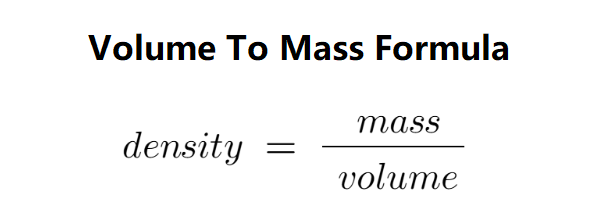 Home
Home
 Back
Back

Definition: This calculator computes the mass (\( m \)) of a material based on its volume (\( V \)) and density (\( \rho \)).
Purpose: It is used in various fields such as physics, engineering, and everyday applications to determine the mass of a given volume of material, which is essential for weight calculations, material handling, and design.
The calculator uses the following formula:
Formula:
Unit Conversions:
Steps:
Calculating mass from volume is crucial for:
Example: Calculate the mass of water (fresh, 4 °C) with a volume of \( V = 2 \, \text{L} \).
Q: What is the relationship between volume, density, and mass?
A: Mass (\( m \)) is the product of density (\( \rho \)) and volume (\( V \)), given by the formula \( m = \rho \times V \).
Q: Why is density important in this calculation?
A: Density is a material property that relates mass to volume. Knowing the density allows you to calculate the mass of a given volume of that material.
Q: How does the calculator handle different units?
A: The calculator allows users to input volume in various units (m³, cm³, mm³, in³, ft³, L, mL) and converts them to m³ for calculation. The mass can be displayed in user-selected units (kg, g, mg, lb, ton).